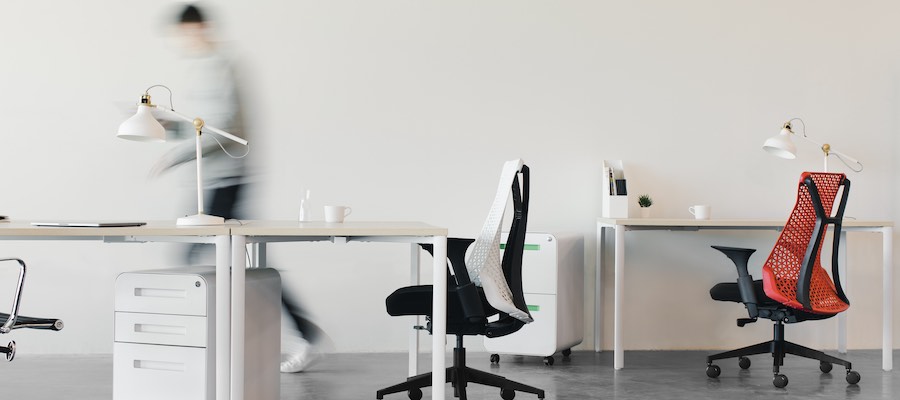Blended Working & The Future Of Offices
For nearly half of the UK, working from home has become the norm over recent months. Meetings now mean video calls rather than sitting in a room with other people and having a chat with your colleagues is on Slack and not by the watercooler. Even companies that resisted remote working in the past were able to adapt remarkably quickly when it became essential for survival.

Is this the death of the office as we know it? Are we never again going to experience bacon roll Friday, or share birthday cake with our co-workers? That seems unlikely. In England, staff are being encouraged to return to offices, partly to boost the city centre economy, as coffee shops and the like are struggling without the regular footfall of workers grabbing their caffeine fix or their lunchtime panini. Serviced offices are introducing smart phone check ins for contact tracing, hand sanitiser stations and one-way systems to keep their tenants safe when they return. So, what is the future going to look like?
Rise in Working From Home
In June 2020 49% of workers in the UK worked from home for at least some of the time (Office for National Statistics). The statistics, however, do not tell us how many of these worked from home all the time. Looking at a survey by the CIPD the figures are not quite as alarming. They found that 9% of staff were permanently working from home before lockdown, with the number expected to rise to 22% even after the pandemic. Similarly, the numbers working from home regularly but not every day was 18% before lockdown and is expected to increase to 37%.
Turning the numbers around we can therefore see that 63% of staff are expected to be in the office at least some of the time. While businesses may need to re-evaluate the total amount of office space they require, it is clear that offices are still going to be the main workplace for the majority of workers for the foreseeable future.

What is Blended Working?
However, there is definitely a shift toward some sort of blended working as we attempt to adjust and adapt, with more people splitting their time between various workplaces and at the same time looking at more flexible ways of working.
Blended working can include a flexible approach to the days worked, the hours worked and the location of the work. For example, one long day in the office every week and three shorter ones from home, working from home every second week, or the option to work at the weekend and have a day off midweek.
Planning and Communication
From a management point of view it can take a lot of planning: making sure the phones are covered during traditional office hours and that teams can work smoothly without waiting for team members who are not available to play their part in a project. Regular communication, whether it’s weekly meetings in the office that everyone attends, zoom calls or quick project scrums, becomes even more important so that workload is spread fairly and expectations are realistic.
Remote Working and IT
IT has a crucial part to play in blended working, of course. For example, are all the files available in the cloud? Can your database be accessed remotely? What about your accounts system? And does everyone’s computer have a working webcam and microphone for video calls? Don’t overlook security either. If staff are using their own equipment to access company data, do you have the necessary safeguards in place to a keep your systems safe from hackers? A cybersecurity policy and training can help avoid silly but costly mistakes.
Remote working doesn’t suit everyone, however. Some workers are highly self-motivated and will happily complete their work in isolation, and appreciate the flexibility it provides. On the other hand some need the guidance of co-workers or supervisors to help them progress or maybe benefit from more structure and routine in their working lives. Or of course, they may just miss the social aspect of working in an office which should definitely not be underestimated.

Where does this leave business owners? Offices are here to stay it seems, but the number of people in them may vary day to day. However, don’t rush to downsize yet, as social distancing rules may require some reorganisation of your space to spread out desks or expand meeting rooms for the times that all staff are together.
Flexibility of Office Spaces
Serviced offices have an advantage here as you may be able to use facilities such as a choice of shared meeting rooms as and when you need them. You may also be able to benefit from space planning advice or have the option of moving to a space with a different layout. The key is flexibility, so speak to your landlords about the options for upsizing or downsizing when required and look for office spaces with flexible terms.
Nobody knows exactly what the future holds, so the best option is to ensure that your team is set up to work from home if they need to, offer them a degree of blended working if you can, and remain open minded and flexible so that you can continue to operate effectively in any location.